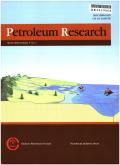澳大利亚养蜂人组的时空特征:相发育、碳酸盐和硅质物质的混合以及影响因素
IF 4
Q1 Earth and Planetary Sciences
引用次数: 0
摘要
Beekeeper组是一个碳酸盐岩-硅-碎屑混合储层,长期以来一直被认为是澳大利亚珀斯盆地北部的一个已探明的天然气储层。然而,其特征和时空分布仍不清楚。本研究有两个主要目的:(1)确定养蜂人组的主要切割相群/亚群和电相;(2)了解养蜂人群体的时空特征及其发展。为了实现这些目标,我们进行了多种综合分析,包括切割、电缆测井和XRF分析。确定了15种切割成分和9种电相,形成了养蜂人组。养蜂人组由9个相亚组组成,分为碳酸盐为主相组、硅屑为主相组和碳酸盐-硅屑混合相组。此外,根据主要相群,该组在纵向上可分为下、中、上三部分。下部和上部以硅塑性物质为主,中部以碳酸盐物质为主。研究区北部养蜂人组以硅塑性物质为主,含少量碳酸盐物质;中南部养蜂人组以碳酸盐物质为主,含少量-中度硅塑性物质。影响养蜂人组演化的过程多种多样,包括硅屑组分的流入、碳酸盐与硅屑物质的混合、碳酸盐生物生长的适宜环境、海平面波动和构造活动等。本文的研究成果将为研究碳酸盐岩-硅屑混合储层的总体特征提供新的思路,并具有区域性和全球性的适用性。本文章由计算机程序翻译,如有差异,请以英文原文为准。
Spatio-temporal characterisation of the Beekeeper Formation of Australia: facies development, mixing of carbonate and siliciclastic materials, and influencing factors
The Beekeeper Formation, a mixed carbonate-siliciclastic reservoir, has long been known as a proven gas reservoir in the northern Perth Basin, Australia. However, its characteristics, and spatio-temporal distribution are still not well understood. There are two main objectives of this study: (1) to identify the main cutting facies groups/subgroups, and electrofacies of the Beekeeper Formation; and (2) to understand spatio-temporal characteristics, and development of the Beekeeper Formation. Integrated multi analyses have been conducted to achieve these objectives including cutting, wireline logging, and XRF analyses. Fifteen types of cutting components, and nine electrofacies were identified forming the Beekeeper Formation. The Beekeeper Formation consists of nine facies sub-groups, and these are classified into carbonate-dominated facies group, siliciclastic-dominated facies group, and mixed carbonate-siliciclastic facies group. Furthermore, this formation can vertically be divided into three parts on the basis of the main facies groups: the lower, middle, and upper parts. The lower and upper parts consist predominantly of siliciclastic materials, while the middle part is dominated by carbonate materials. In the north of the study area, the Beekeeper Formation consists predominantly of siliciclastic materials with minor carbonate materials, whereas in the central to south it consists mainly of carbonate material with minor-moderate siliciclastic materials. Various processes have influenced the evolution of the Beekeeper Formation including influx of siliciclastic components, mixing of carbonate and siliciclastic materials, suitable environment for the growth of carbonate biotas, sea level fluctuation, and tectonic activities. It is expected that findings from this study will provide new insights into characteristics of mixed carbonate-siliciclastic reservoirs in general, and will have regional and global applicability.
求助全文
通过发布文献求助,成功后即可免费获取论文全文。
去求助
来源期刊

Petroleum Research
Earth and Planetary Sciences-Geology
CiteScore
7.10
自引率
0.00%
发文量
90
审稿时长
35 weeks
 求助内容:
求助内容: 应助结果提醒方式:
应助结果提醒方式:


